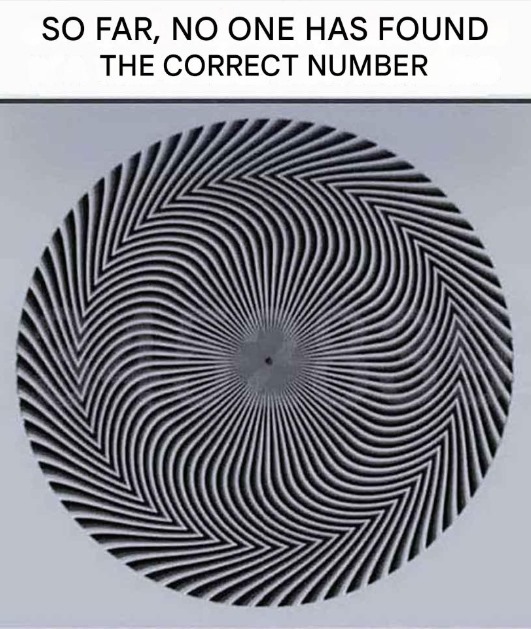ADVERTISEMENT
## The Illusion: What Do You See?
Imagine looking at an image made up of swirling black and white patterns, reminiscent of a zebra print or static on an old TV screen. Somewhere within this chaos is a number—**but it’s not immediately obvious to everyone.**
Some people see a **five-digit number**, others see **only part of it**, and some may not see any number at all at first. The image plays with **contrast, spatial frequency, and visual processing**, making it the perfect example of how our brains can interpret the same image in different ways.
If you haven’t seen the illusion yet, don’t worry—we’ll describe how it works and what it reveals.
—
## What Is Spatial Frequency?
To understand why people see different numbers in this illusion, we need to talk about a concept called **spatial frequency**. Simply put, spatial frequency refers to how often visual patterns (like lines or changes in brightness) occur within a given space.
– **High spatial frequency** means lots of fine detail—like tiny lines or sharp edges.
– **Low spatial frequency** refers to broader, more general shapes and tones—think shadows or blurred outlines.
Different parts of our visual system process these frequencies differently. In this particular illusion, the image is cleverly designed to combine both **high-frequency detail** and **low-frequency shapes**, layered on top of each other. Depending on your eyesight and how your brain interprets visual input, you might notice one frequency range more strongly than the other.
—
## Why You Might See a Different Number
So why do you see “45283” and your friend sees “528”? Here are some possibilities:
### 1. **Contrast Sensitivity**
Some people’s eyes are more sensitive to contrast—the difference between light and dark areas. Those with sharper contrast sensitivity may pick up on the high-frequency elements (smaller numbers or details), while others might only see the broader, low-frequency shapes.
### 2. **Visual Acuity**
People with **near-perfect vision** are more likely to notice the subtle, fine details hidden in the image, including more digits. On the flip side, if your vision isn’t crystal clear—or if you’re nearsighted, for example—you might only see part of the number, or miss the finer lines altogether.
### 3. **Peripheral vs. Central Vision**
Sometimes, looking directly at the image causes you to miss the number completely. But shift your gaze slightly—or even squint—and suddenly the digits become clear. That’s because our **peripheral vision** processes information differently than our central (foveal) vision. Peripheral vision is better at detecting broad patterns, which can be helpful in seeing the hidden number.
### 4. **Cognitive Interpretation**
Beyond the physical structure of your eyes, your brain plays a major role in how you interpret visual stimuli. Past experiences, pattern recognition, and even expectations can shape what you perceive in an optical illusion. If your brain *expects* to see a certain pattern, it may unconsciously fill in the blanks.
For Complete Cooking STEPS Please Head On Over To Next Page Or Open button (>) and don’t forget to SHARE with your Facebook friends
